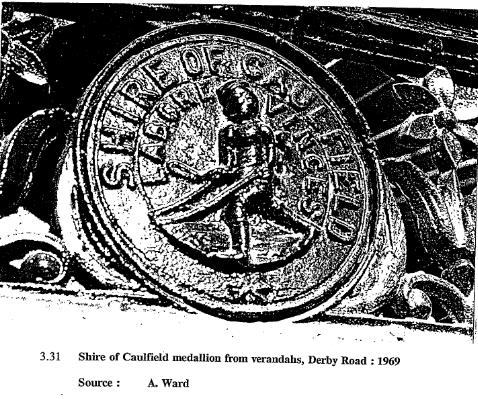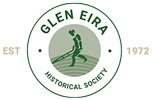
In 1993 the Caulfield Council gave the Caulfield Historical Society permission to use the old Town seal of a ploughman. The ploughman seal had been out of use since 1913 when it was replaced by a coat of arms, considered a more appropriate symbol of the newly proclaimed City of Caulfield. The Brighton Southern Cross[1] reported that the new coat of arms was ‘more becoming to the dignity of a city than the old seal – a husbandman ploughing’.

In the early days of Caulfield a husbandman ploughing the land would have been a common sight. The European settlers worked hard to cultivate the land for crops such as cabbages, parsnips, onions and carrots. Chinese gardeners, Hang Wang and Ah Nuey farmed small allotments on Glen Huntly Road in 1884-5[2].
An engraver, T.C Arnoldi, was engaged to make the die of the ploughman in 1864. He used an image from the front cover of a popular London literary magazine, The Cornhill Magazine[3]. Mr Arnoldi of Lt Collins Street also created the Melbourne Public Library seal in 1871[4].

Our ‘new’ ploughman was designed by Freshpict in Murrumbeena and we love the clean lines and colour palate. The ploughman: in use from the 1860s till 1913, appearing again in 1969 as metal medallions on shop verandahs in Derby Road, Caulfield East[5], and revived by the historical society in 1993. The ploughman still speaks to us of the early settlers.

We’d love to hear from you.
Written by Barbara Hoad, GEHS President, November 2020
[1] Brighton Southern Cross, Saturday 2 August 1913, page 4
[2] From Sand, Swamp and Heath… a history of Caulfield, Murray and Wells (1980), page 101
[3] The Cornhill Magazine was edited by William Makepeace Thackeray in 1860-62 and was in print until 1975. https://digital.nls.uk/jma/topics/publishing/cornhill.html
[4] Weekly Times, 7 January 1871, page 6
[5] City of Glen Eira Heritage Management Plan 1996, Volume 2, Andrew Ward, page 50
